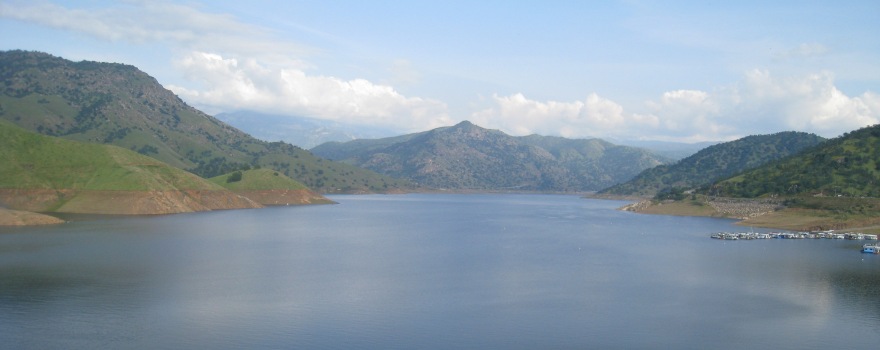Prepared exclusively for Maven’s Notebook by Robert Shibatani:
As of May 31, 2020
 The late-spring and summer months have arrived, and the WY enters its high demand period. Despite a little end-of-month precipitation, annual totals across the State remain significantly below average (e.g., roughly 60% of normal in the north State). This has not changed throughout much of the preceding winter/spring season. And yet total north CVP reservoir storage (e.g., Trinity, Shasta, Folsom, New Melones, and San Luis) still stands at 100% of its 15-year average for this date.
The late-spring and summer months have arrived, and the WY enters its high demand period. Despite a little end-of-month precipitation, annual totals across the State remain significantly below average (e.g., roughly 60% of normal in the north State). This has not changed throughout much of the preceding winter/spring season. And yet total north CVP reservoir storage (e.g., Trinity, Shasta, Folsom, New Melones, and San Luis) still stands at 100% of its 15-year average for this date.
For federal water management, there is currently about 8.43 MAF in storage in north CVP reservoirs (or 74% of total reservoir system capacity). The four largest northern California reservoirs, Shasta, Oroville, Trinity, and New Melones are at 95, 91, 102, and 119% of each of their 15-year medians, respectively. CVP and SWP mainstem releases (e.g., from Shasta and Oroville) are maintaining their long-term averages, but tributaries like the American and Trinity rivers for example, are releasing notably less than their 15-year medians. Interestingly, even with below-normal precipitation, reservoir “spills” across several of the smaller federal facilities were notable this past rainy season, totaling over 70 TAF, once again demonstrating the capacity constraints of the system.
The State existing snowpack is now essentially gone. Remaining SWE values are less than an inch across the Sierra Nevada regions. Water remains in basin vadose/phreatic storage and baseflows are being maintained, but we cannot rely on any further significant snowmelt-derived reservoir inflows.
Northern Sierra Precipitation 8-Station Index (as of June 1st) is 31.3 inches (or 63% of average for this date) and the 2nd driest to date. The San Joaquin Precipitation 5-Station Index is 24.5 inches (or 64% of average) and the 3rd driest to date. The Tulare Basin Precipitation 6-Station Index is at 18.5 inches (or 67% of average).
Despite the below normal precipitation accumulations for the WY, northern California water supplies are sufficient for the remainder of the WY. In fact, for some north State purveyors, there is enough to begin seeking approval for temporary transfers to large south-Central Valley Ag water users.
Prepared by Robert Shibatani: Robert Shibatani, a physical hydrologist with over 35-years combined academic, legal, consulting and water advisory expertise, is an international expert witness on reservoir-operations, climate change hydrology, commercial flood damage litigation, and water supply development. He is Managing Partner for The SHIBATANI GROUP International, a division of The SHIBATANI GROUP Inc. and resides in Sacramento, California. robert@theshibatanigroup.com
FOR MORE INFORMATION
Reservoirs
- Daily Reservoir Summary
- Selected Reservoirs, Daily Graphs (interactive)
- CA Data Exchange Center: Reservoirs
- CVP Daily Water Supply Report
Precipitation
- Real-time Rainfall Maps
- Detailed Monthly Precipitation Summary for Water Year
- Center for Western Weather and Water Extremes (CW3E)
Snow
Full Natural Flow Data
Drought/Climate
Water Project Operations
- State Water Project Operations and Delta Status
- Central Valley Project Operations
- Lower Colorado River Operations
Delta conditions
- Bay-Delta Live (Real Time Delta Conditions)
- EcoAtlas (Delta Restoration Projects)
Specialty Portals
- My Water Quality (CA Water Quality Monitoring Council)
- Fish Surveys (Department of Fish and Wildlife)
- NASA GRACE Groundwater and Soil Moisture Conditions


